Plain fabric, with its simple and regular weave, is a fundamental and versatile textile that finds its place in various aspects of our lives.
From clothing and upholstery to curtains and crafts, the plain fabric offers a timeless aesthetic that can adapt to diverse styles and design preferences.
The absence of patterns or textures allows the plain fabric to provide a clean and structured look, making it a popular choice in many applications.
It can be crafted from various materials, including natural fibers like cotton, wool, and silk, and synthetic fibers like polyester and acrylic.
Understanding the characteristics and uses of plain fabric helps us appreciate its significance in the textile industry and guides us in selecting suitable fabrics for specific projects.
In this exploration, we will delve into plain fabric’s properties, advantages, disadvantages, and environmental impact, shedding light on its role in our everyday lives.
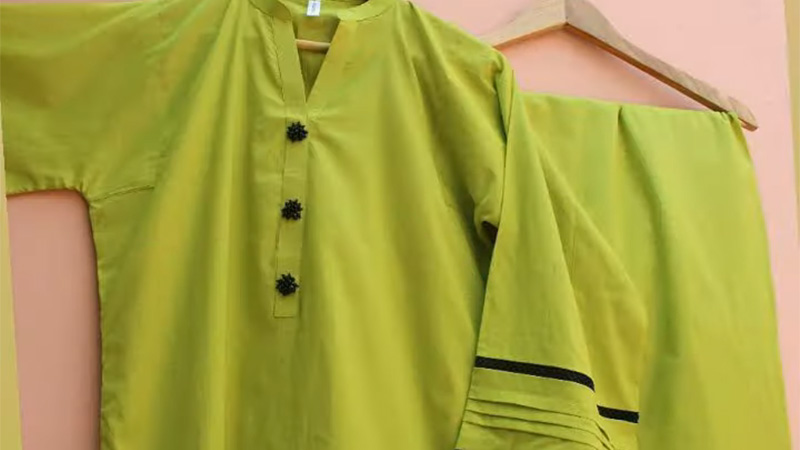
About What is Plain Fabric
Plain fabric is a versatile woven fabric characterized by its straightforward and uniform construction. It is created by interlacing two sets of yarns perpendicularly, with one set passing over and under the other in a regular pattern.
This interlacing technique results in a smooth, flat surface with a plain appearance. The simplicity of its structure lends itself to a wide range of applications.
Plain fabric, including shirts, dresses, and skirts, is commonly used in clothing production. It is also utilized in bedding items like sheets and pillowcases and for curtains and upholstery due to its timeless and adaptable nature.
History of Plain Fabric
The history of plain fabric stretches back thousands of years. The earliest evidence of weaving, the technique used to create plain fabric, dates back 27,000 years.
Impressions of textiles and basketry were discovered in Dolní Věstonice, Czech Republic, preserved in small pieces of hardened clay. These ancient artifacts showcase the early mastery of interlacing yarns to form a basic structure.
Around 6500 BC, the technique of nålebinding emerged. This method, a precursor to knitting, involved single-needle stitching without knots. While not strictly a plain weave, it represented an early form of fabric creation.
Over the centuries, plain weaving became a prominent technique in various cultures worldwide. From ancient civilizations in Egypt, Greece, and Rome to the rich textile traditions of Asia and the Americas, plain fabric played a vital role in clothing, home goods, and trade.
Its simplicity and versatility made it a staple choice, and its legacy remains a fundamental weaving technique.
Plain Weave Characteristics
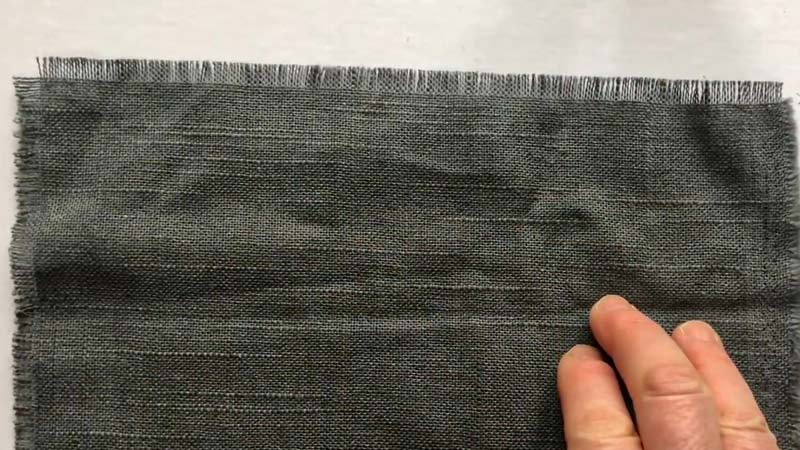
A plain weave is one of the simplest and most common weaving patterns used in textiles. Here are some of its characteristics:
No Right or Wrong Side
Plain weave fabrics have an identical appearance on both sides, making them reversible and eliminating the need to distinguish between the front and back.
Limited Stretch
Unlike other weaves, plain weave fabrics lack significant stretch along the lengthwise (warp) or crosswise (weft) directions. However, they exhibit some stretch on the bias, the diagonal direction between the warp and weft yarns.
Resistance to Fraying
Plain weave fabrics tend to be more resistant to fraying compared to other weaves. The interlacing of yarns at right angles creates a stable structure that minimizes unraveling.
Proneness to Creasing
Due to their simple construction, plain weave fabrics tend to crease easily. This characteristic can be advantageous for specific applications, such as garments requiring crisp pleats or tailored finishes.
Absorbency
Plain weave fabrics typically exhibit lower absorbency compared to other weaves. The closely woven structure limits the ease of liquid penetration, making them less absorbent.
Weight Variation
Plain weave fabrics come in various weights, from sheer and lightweight versions to heavy and substantial variants. The weight of the fabric depends on the type and thickness of the yarns used in the weaving process.
Versatility
One of the critical strengths of plain weave fabrics is their versatility. They can be used for various purposes, including clothing, home textiles, upholstery, etc. The plain and regular appearance of the fabric makes it suitable for a wide array of designs and styles.
Flexibility
Plain weave fabrics offer flexibility in terms of draping and movement. They adapt well to the body or the shape of objects, making them comfortable to wear and easy to work with in various applications.
Types of Plain Fabric
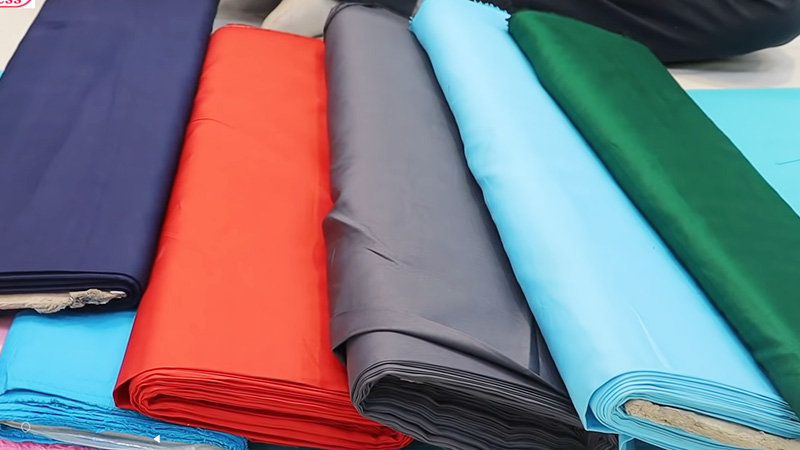
Plain fabrics refer to textiles that are simple in structure, often characterized by a uniform weave or knit construction without any additional patterns or designs.
There are various types of plain fabrics, each with unique characteristics and suitable applications. Here are some common types:
Velvet
Velvet is a luxurious and soft fabric with a dense pile. It is known for its smooth and lustrous surface, created by weaving two sets of yarns using a plain weave technique.
Chiffon
Chiffon is a lightweight and sheer fabric often used in elegant and flowing garments. It is made using a plain weave with fine yarns, resulting in a delicate and translucent appearance.
Muslin
Muslin is a versatile plain weave fabric found in various weights. It is typically made from cotton and is used for multiple applications, including clothing, upholstery, and curtains.
Poplin
Poplin is a durable fabric with a slightly ribbed texture. It is created using a plain weave and is known for its smooth and crisp finish. Poplin is commonly used for shirts, dresses, and tailored garments.
Taffeta
Taffeta is a crisp and lustrous fabric made from silk or synthetic fibers. It is woven using a plain weave and is often used for formalwear, wedding dresses, and evening gowns.
Crêpe
Crêpe fabric has a distinctive grainy texture and slight stretch. It uses a plain weave technique, and the resulting fabric has a unique drape. Crêpe is commonly used for dresses, blouses, and lightweight garments.
Georgette
Georgette is a lightweight and sheer fabric with a slightly crinkled texture. It is woven using a plain weave and is often used for flowing dresses, blouses, and scarves.
Cambric
Cambric is a lightweight and closely woven plain fabric made from cotton or linen. It is known for its smooth and crisp finish and is commonly used for shirts, handkerchiefs, and linings.
Flannel
Flannel is a soft and warm fabric typically made from wool or cotton. It is woven using a plain weave and is known for its brushed surface, which provides added insulation.
Cheesecloth
Cheesecloth is a loose and gauzy fabric made from cotton. It is woven using a plain weave and has an open texture. Cheesecloth is often used in culinary applications, as well as for crafts and household uses.
What is Plain Fabric Made of?
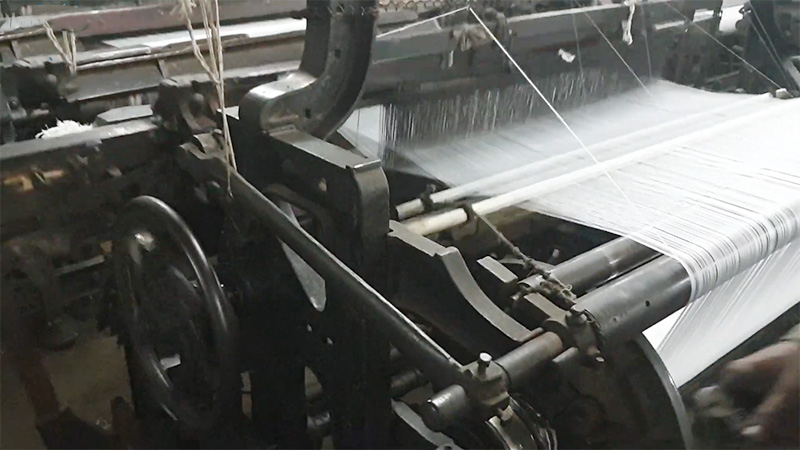
Fiber Selection
The first step in making plain fabric is choosing the fiber type used. This decision can depend on factors such as desired characteristics (e.g., softness, strength, breathability), intended use of the fabric, and cost considerations.
Fiber Preparation
If natural fibers are being used, they often go through cleaning and carding. Carding involves aligning the fibers in a parallel arrangement to create a uniform and consistent web.
Synthetic fibers may undergo a different preparation process, such as extrusion, to make the desired fiber shape.
Yarn Formation
The prepared fibers are then spun into yarns. This can be done through ring, open-end, or air jet spinning. The spinning process twists the fibers together to form continuous strands of yarn.
Weaving
Next, weave the yarns into the fabric using a plain weave structure. In plain weave, one set of yarns (known as the warp) runs parallel to the fabric’s length, while another set of yarns (known as the weft or filling) crosses over and under the warp threads in a perpendicular direction.
Finishing
Once the weaving is complete, the fabric may undergo various finishing processes to enhance its appearance, texture, and functionality. This can include bleaching, dyeing, printing, or embossing treatments, depending on the desired color and pattern effects.
Inspection and Quality Control
After finishing, the fabric is inspected for any defects or imperfections. Quality control measures ensure that the fabric meets the required strength, colorfastness, and quality standards.
Cutting and Sewing
Finally, the plain fabric is cut into desired shapes and sizes, and it can be further processed through sewing techniques to create various products such as garments, home textiles, or upholstery.
What is Plain Fabric Used for?
Plain fabric is versatile and has applications in various industries and everyday uses. Some common uses of plain fabric include:
Clothing
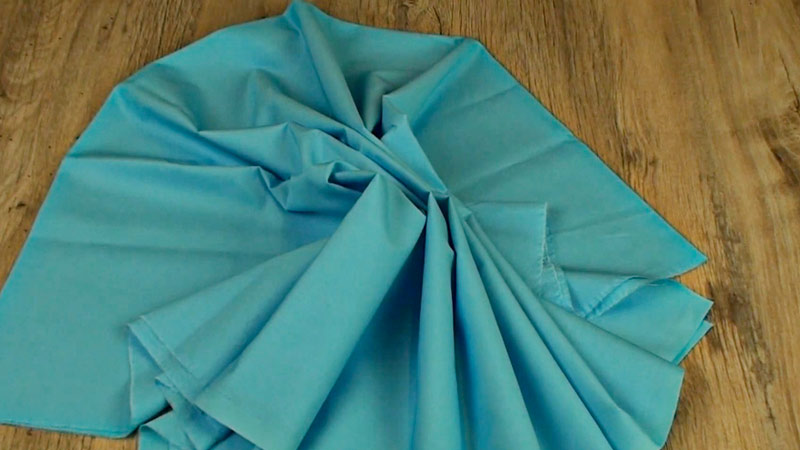
Plain fabric is widely utilized in clothing production. It is often employed in creating shirts, blouses, and tops, especially those with a structured and crisp appearance.
Business shirts, button-ups, and tailored garments commonly feature plain weaves, providing a neat and professional look.
Suits and Blazers
Plain weave is favored for suiting and blazer fabrics. Its regular and balanced structure contributes to a polished and refined aesthetic. Suits, blazers, and trench coats often utilize plain fabric to achieve a tailored and sophisticated appearance.
Furnishing Fabrics
Plain weave fabrics are extensively used in furnishing applications. They are commonly found in upholstery, curtains, draperies, and furniture coverings.
The versatility of plain weave allows it to adapt to different styles, from formal to casual, making it a popular choice for home and commercial spaces.
Bedding and Linens
Plain weave produces bed linens, such as sheets, pillowcases, and duvet covers. Its smooth and flat surface provides comfort and ease of care. Additionally, plain weave is used in table linens, including tablecloths and napkins, for a classic and elegant touch.
Craft and DIY Projects
Plain fabric is a versatile base material for various craft and do-it-yourself projects. Its simplicity and ease of manipulation make it suitable for sewing projects, quilting, embroidery, and other creative endeavors.
Accessories
Plain weave fabrics create accessories such as ties, scarves, handkerchiefs, and pocket squares. The structured and refined appearance of plain fabric adds a touch of sophistication to these accessories.
Medical and Surgical Applications
Plain weave fabrics find utility in the medical field, where they are used for surgical gowns, lab coats, and healthcare apparel. The durability and breathability of plain fabric make it a practical choice in healthcare settings.
Industrial and Technical Textiles
Plain weave fabrics are also employed in industrial and technical applications. They can be used as reinforcement materials in composites, filtration media, and protective clothing.
Classification of Plain Cloth
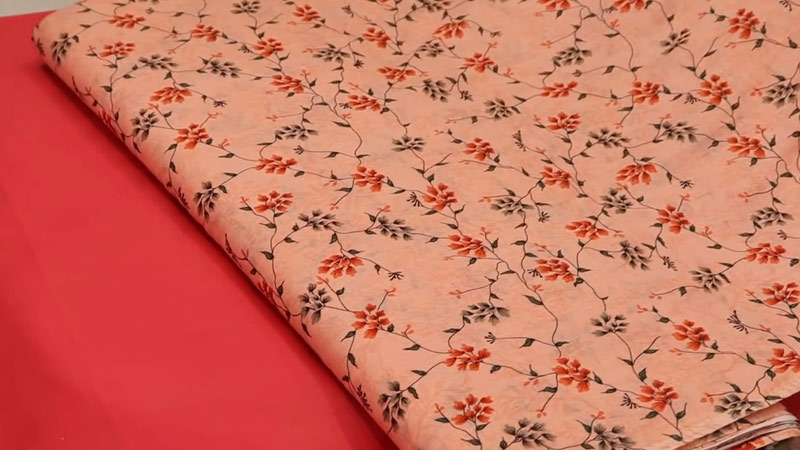
Plain cloth can be classified based on various factors, including the type of fiber, weave pattern, weight, finish, and purpose. Here’s a classification based on these factors:
Fiber Type
Plain cloth can be classified based on the type of fiber it is made from. This includes cotton, wool, silk, linen, and synthetic fibers like polyester or nylon. Each fiber type offers unique breathability, durability, texture, and comfort characteristics.
Weight
Plain cloth can be categorized based on its weight, which is determined by the density of the yarns used in weaving. Fabrics can range from lightweight and sheer versions, suitable for delicate garments or draperies, to heavyweight options for upholstery or heavy-duty applications.
Quality
Plain cloth can also be classified based on its quality, which is determined by factors such as the fineness of the fibers, the tightness of the weave, and the overall craftsmanship.
Higher-quality plain fabrics are typically made with finer yarns and have a more precise and consistent weave, resulting in a smoother, more refined appearance.
Poplin
A tightly woven, medium-weight fabric with a slight ribbed texture. It is often used for shirts, dresses, and upholstery.
Calico
A plain-woven fabric made from cotton and typically printed with tiny, colorful designs. It is often used for quilting and crafts.
Canvas
A heavy and durable plain-woven fabric, usually made from cotton or linen. It is commonly used for outdoor applications, bags, and artwork.
How Do You Wash Plain Fabric?
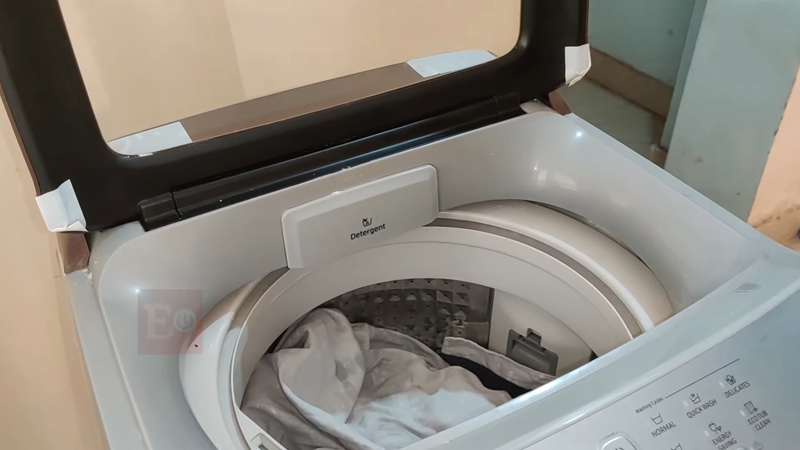
Washing plain fabric depends on the specific type of fabric and any care instructions the manufacturer provides. However, here are some general guidelines for washing plain fabrics:
Sorting
Separate plain fabric items by color and fabric type. This helps prevent color bleeding and ensures that fabrics with similar care requirements are washed together.
Pre-treatment
Check the fabric care label for any specific instructions or recommendations. Treat stains or heavily soiled areas before washing using a suitable stain remover or pre-treatment product.
Washing Machine or Hand Wash
Plain fabric can typically be washed using a washing machine on a cold and gentle cycle. Alternatively, you can hand wash the fabric in a sink filled with cold water.
Use Quality Laundry Detergent
Select a quality laundry liquid or powder suitable for the fabric type. Follow the manufacturer’s instructions for the appropriate amount to use based on the load size and level of soiling.
Inside Out
To protect any prints or delicate surface details, turn the plain fabric inside out before washing. Minimize excessive agitation to prevent damage to the fabric. Avoid using bleach unless specifically recommended by the care instructions or for white fabrics.
Drying
After washing, gently squeeze out excess water from the plain fabric item without wringing. Reshape the fabric to its original dimensions and lay it flat to dry or hang it on a suitable hanger.
Ironing
Once the fabric is dry, you may need to iron it to remove wrinkles. Turn the fabric inside out and use a warm iron. If there are specific care instructions on the fabric label, follow them accordingly.
How to Care for Plain Clothes?
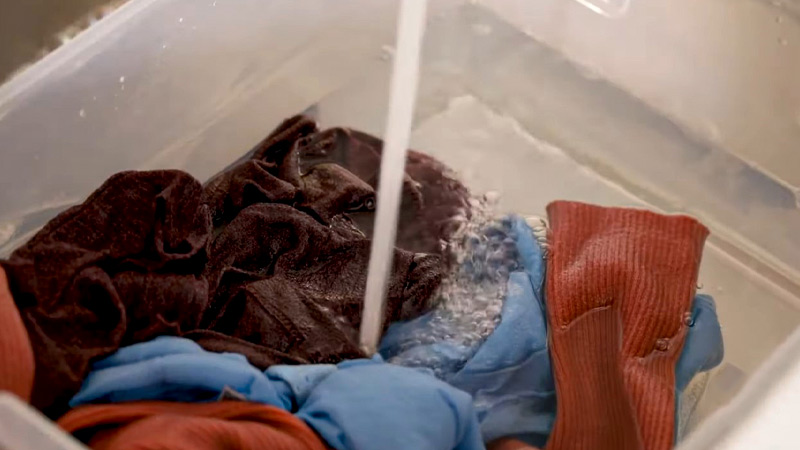
Caring for plain clothes involves several steps to ensure they remain clean, maintain quality, and last longer. Here’s a general guide on how to care for plain clothes:
Assess the Need for Washing
Before washing plain clothes, consider if they genuinely require laundering. Many items can be worn multiple times before being washed, especially if they are not visibly soiled or odorous.
Use Eco-Friendly Detergents
When washing plain clothes, opt for earth-friendly detergents that are gentle on the fabric and the environment.
Look for biodegradable or environmentally friendly detergents, as they are typically formulated to minimize harmful chemicals and reduce pollution.
Spot Treat Stains
Instead of automatically washing the entire garment for a small stain, try spot-treating the affected area. Use eco-friendly stain removers or natural remedies like vinegar or baking soda to target specific stains.
Avoid Unnecessary Ironing
Plainclothes made from wrinkle-resistant materials, like synthetic blends or certain types of cotton, may not require ironing after each wash.
Hang them properly or smooth out any wrinkles while still damp to minimize the need for ironing. This saves energy and helps maintain the fabric’s original appearance.
Drip Dry or Air Dry
To preserve the shape and structure of plain clothes, consider air drying them instead of using a dryer. Hang the clothes on a clothesline or drying rack, ensuring they are adequately supported and not stretched out. This method is gentler on the fabric and helps reduce energy consumption.
Store Clothes Properly
Store plain clothes in a clean and dry environment when not in use. Avoid overcrowding clothes in the closet or drawer to prevent wrinkles and creases.
Consider using garment bags or breathable fabric storage containers to protect the clothes from dust, sunlight, and pests.
How to Sew Plain Fabric?
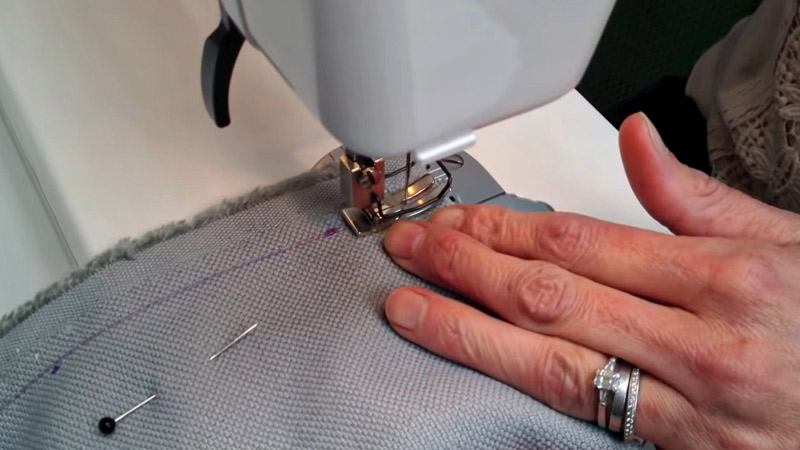
Sewing with plain fabric is straightforward, but attention to detail and proper technique can ensure professional-looking results. Here’s a general guide on how to sew with plain fabric:
Gather Your Materials
You will need a sewing machine, thread, scissors, pins, and an iron. Choose a thread color that matches or complements your fabric.
Prepare the Fabric
Measure and cut the plain fabric to your project’s desired size and shape. Use fabric scissors to ensure clean and precise cuts.
Pin the Fabric
Place the fabric pieces together with their right sides facing each other. Align the edges and secure them in place with straight pins.
Set Up the Sewing Machine
Thread your sewing machine with the chosen thread color. Refer to the machine’s manual for specific instructions on threading and setting stitch length and tension.
Sew the Fabric
Begin sewing along the edges of the fabric, starting at one end and following the seam allowance you desire. Use a straight stitch or the appropriate stitch for your project.
Backstitch at the beginning and end of the seam to secure the stitches. Remove the pins as you sew, taking care not to sew over them.
Leave an Opening
If you are creating a closed project like a pillow or a bag, leave a small opening in the seam. This opening will allow you to turn the fabric right side out later. Be sure to mark the opening to avoid accidentally sewing it shut.
Trim Excess Fabric and Clip Corners
Once the stitching is complete, trim any excess fabric and clip the corners diagonally. This reduces bulk and helps achieve cleaner corners when the fabric is turned right side out.
Turn the Fabric Right Side Out
Gently turn the fabric through the opening so the right side faces out. Use a blunt tool, like a chopstick or a turning tool, to carefully push out the corners and edges for a neat finish.
Press the Fabric
Press the sewn fabric with an iron set to the appropriate temperature for your fabric type. Press along the seams and edges to flatten them and create a crisp finish.
How Does Plain Fabric Impact the Environment?
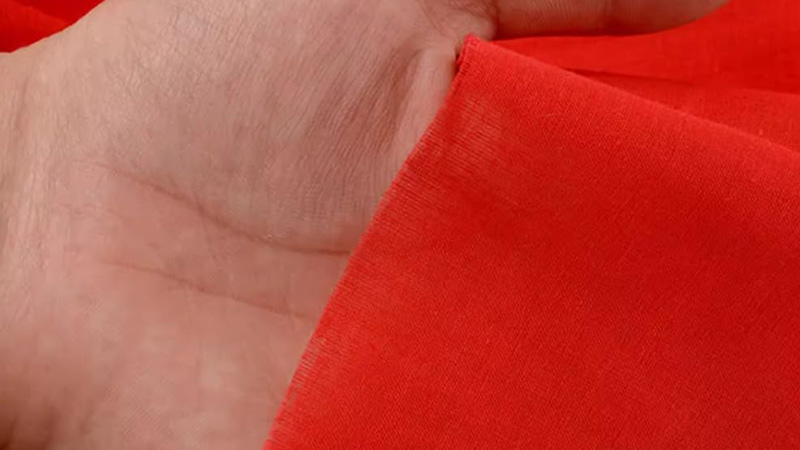
Plain fabric can have positive and negative environmental impacts, depending on various factors such as the fiber source, production processes, usage, and disposal methods.
Here are some ways in which plain fabric can impact the environment:
Raw Material Production
Plain fabric’s environmental impact begins with its raw materials production. Natural fiber production, such as cotton farming, can consume significant amounts of water, require pesticides and fertilizers, and contribute to soil degradation.
Synthetic fibers are derived from non-renewable fossil fuels and involve energy-intensive manufacturing processes.
Energy and Water Consumption
The production of plain fabric often requires substantial energy and water inputs. From cultivating crops or manufacturing synthetic fibers to processing, dyeing, and finishing the fabric, these processes can contribute to greenhouse gas emissions and pressure water resources.
Chemical Use and Pollution
The dyeing and finishing processes of plain fabric may involve chemicals, such as dyes, bleaches, and finishing agents.
Improper management of these chemicals can result in water pollution, as they may be released into rivers and streams, affecting aquatic ecosystems and biodiversity.
Additionally, exposure to toxic chemicals can pose risks to the health and safety of workers in the textile industry.
Microplastic Pollution
Synthetic fibers used in some plain fabrics, mainly polyester, can shed microplastics when washed or worn. These microplastics can enter water bodies, harm marine life, and potentially enter the food chain.
Waste Generation
Plain fabric contributes to waste generation throughout its lifecycle. This includes waste generated during the production process, such as fabric scraps and offcuts, and post-consumer waste when garments or textile products end their life. Proper disposal and management of textile waste are crucial to minimize environmental impacts.
Recycling and Circularity
The environmental impact of plain fabric can be mitigated through recycling and circularity efforts. Recycling fabric can reduce the demand for virgin materials, conserve resources, and decrease waste.
Promoting circular economy principles, such as designing for durability and recyclability, can extend the lifespan of plain fabric and minimize environmental impacts.
Advantages and Disadvantages of Plain Fabric
Plain fabric, being a simple and versatile textile, possesses advantages and disadvantages, depending on the context of its use. Here are some of them:
Advantages of Plain Fabric:
- Versatility: Plain fabric is highly versatile and can be used for various purposes, including clothing, upholstery, curtains, and more. Its simple and regular structure allows it to adapt well to different designs and styles.
- Ease of Sewing: Plain weave fabrics are relatively easy to work with, making them suitable for beginners and experienced sewers. The straightforward criss-cross pattern simplifies cutting, pinning, and sewing, allowing for smooth stitching and construction.
- Durability: Plain fabrics, especially those made from sturdy fibers like cotton or linen, are durable and long-lasting. They can withstand regular wear and tear and maintain structural integrity over time.
- Availability: Plain fabrics are widely available and come in various weights and materials. This makes it easy to find the right type of plain fabric for different projects and preferences.
Disadvantages of Plain Fabric:
- Lack of Texture: Plain fabrics lack the intricate patterns and textures in other types of weaves. This can make them appear simple or plain in comparison, which may not suit specific design aesthetics or preferences.
- Prone to Wrinkling: Plain weave fabrics, especially upholstery fabrics, are more prone to creasing and wrinkling. This means they may require frequent ironing or steaming to maintain a smooth and neat appearance.
- Coarse Texture: Some plain fabrics, particularly those made from firm strands, can have a coarse texture. While this may be desirable in specific applications like heavy-duty upholstery, it may not be as comfortable against the skin for clothing items.
- Limited Stretch: Unlike some other weaves, plain fabrics do not typically have significant stretch along the length or width. This can limit their suitability for projects that require stretch or elasticity, such as activewear or form-fitting garments.
- Absorbency: Plain fabrics, depending on the fiber used, may be less absorbent compared to other weaves. This means they may not be ideal for applications where moisture absorption is necessary, such as towels or bathrobes.
Comparison Table Between Plain and Other Fabrics
| Property | Plain Fabric | Poplin | Muslin | Calico |
|---|---|---|---|---|
| Weave | Plain | Plain | Plain | Plain |
| Appearance | Simple, regular pattern | Fine, smooth texture | Lightweight, airy | Plain, unbleached |
| Wrinkling | Prone to creasing | Prone to creasing | Prone to creasing | Prone to creasing |
| Texture | Can be coarse | Smooth | Soft, slightly coarse | Soft, slightly coarse |
| Versatility | Widely used | Versatile | Versatile | Versatile |
| Absorbency | Less absorbent | Moderate absorbency | Moderate absorbency | Moderate absorbency |
| Durability | Generally durable | Durable | Moderate durability | Moderate durability |
| Suitable for | Clothing, upholstery | Shirts, dresses | Drapery, lightweight | Crafts, quilting |
| Fiber Composition | Cotton, wool, silk, | Cotton, cotton blend, | Cotton, cotton blend, | Cotton |
| linen, synthetic | synthetic | synthetic |
FAQs
Yes, plain fabric can be used for outdoor applications, depending on the material used. For example, outdoor plain fabrics from synthetic fibers like polyester or acrylic may offer better durability and resistance to weather conditions than natural fiber options like cotton or silk.
The potential for shrinkage in plain fabric depends on the specific fiber content and how it is processed. Natural fibers like cotton or linen may have a higher tendency to shrink, especially if not pre-washed or treated with care. Synthetic fibers like polyester are generally more resistant to shrinking. It is always recommended to check the care instructions and pre-wash the fabric if needed.
Yes, plain fabric can be used for formal attire. The simplicity and elegance of plain fabric make it suitable for various formal garments like suits, blazers, and formal dresses. It provides a clean and sophisticated look when appropriately tailored and styled.
Yes, plain fabric is commonly used for upholstery purposes. Its structured and durable nature makes it suitable for furniture upholstery, such as chairs, sofas, and cushions. Plain upholstery fabrics can come in a wide range of weights and materials, allowing for versatility in design and performance.
Yes, plain fabric can be dyed or printed with patterns. Since plain fabric lacks its inherent pattern or texture, it provides a blank canvas for various dyeing and printing techniques. It can be easily transformed with different colors, patterns, and designs to suit individual preferences and creative projects.
To prevent or minimize creasing in plain fabric, it is advisable to choose fabrics with a higher thread count or ones that have been treated with wrinkle-resistant finishes. Proper laundering and care, such as avoiding over-drying in the dryer and hanging or folding garments promptly after washing, can help reduce creasing.
Yes, plain fabric can be used for drapery and curtains. The simplicity of plain fabric can provide an elegant and classic look to window treatments. Depending on the desired effect, plain fabric can be used alone or combined with other fabrics or trims to create various styles and textures for drapes and curtains.
To Recap
Plain fabric is a versatile and widely used textile that offers simplicity and elegant appearance. Plain fabric provides a clean and structured look for clothing, upholstery, curtains, or crafts.
It can be made from various materials, including natural fibers like cotton, wool, and silk, or synthetic fibers like polyester or acrylic.
The Plain fabric has advantages, such as ease of sewing, durability, and availability in different weights and materials.
However, it also has drawbacks, such as the potential for creasing, a coarse texture in some cases, and limited stretch.
Understanding the plain fabric’s characteristics, uses, and care requirements allows for informed choices in selecting the appropriate fabric for specific projects.
By considering its environmental impact and implementing sustainable practices, we can further enhance the positive aspects of plain fabric while minimizing its drawbacks, contributing to a more eco-friendly and responsible textile industry.
Leave a Reply